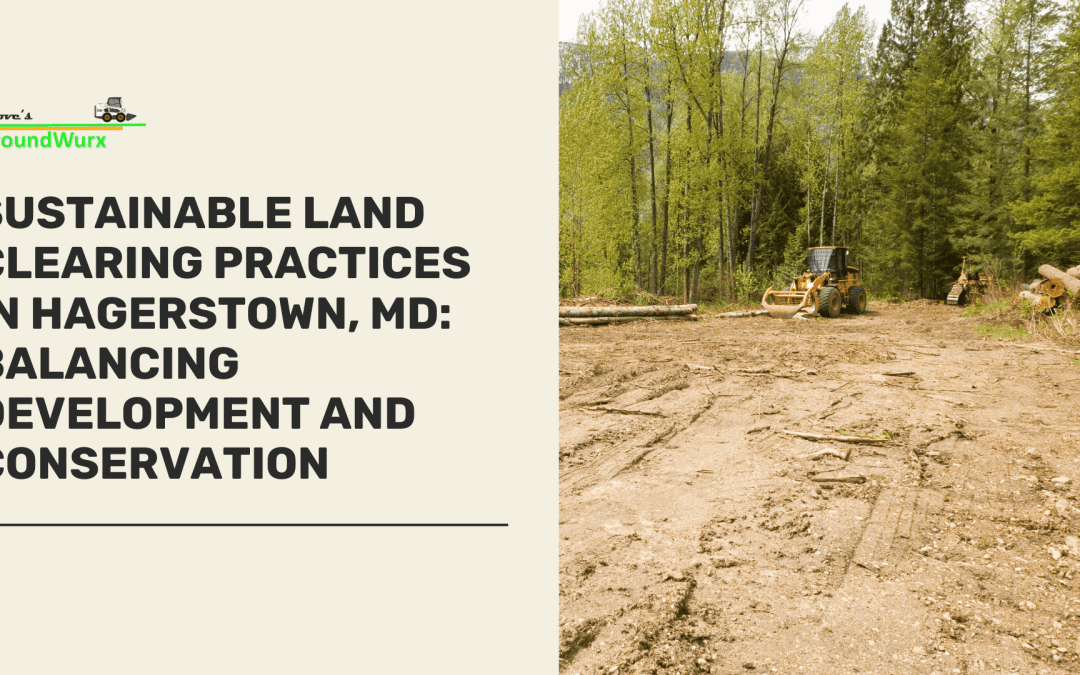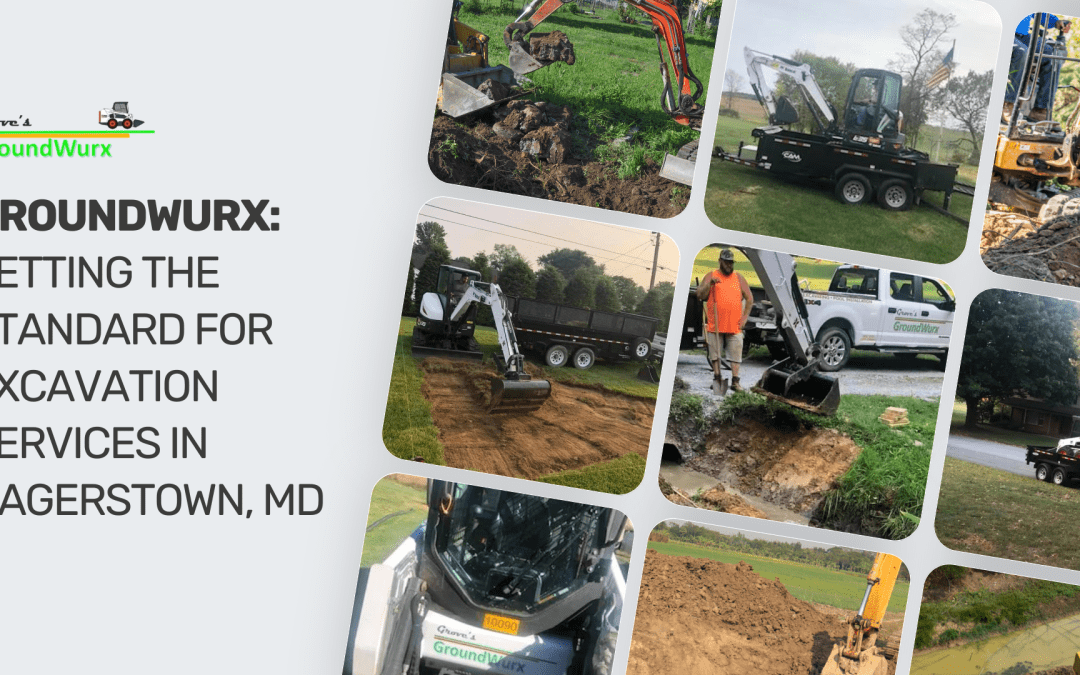When it comes to any construction project, success begins long before the first shovel hits the ground. Pre-excavation planning is the crucial foundation that sets the stage for everything that follows.
Our team has run this race, so we’re here to walk you through six steps to ensure your land grading project is a resounding success!
Whether you’re a seasoned pro or a newcomer to the field, these steps will help you avoid costly mistakes, keep your project on track, and ultimately bring your vision to life with confidence. Let’s dig in!
1. Hazard Identification
Before any earth excavation or digging begins, conducting a thorough hazard identification process is crucial. This step is a cornerstone of your pre-excavation checklist and sets the foundation for a safe and successful excavation project.
Common hazards include hazardous atmospheres, unstable soil, and underground utility lines. Whether you’re planning a small job like topsoil excavation or a more complex construction project, this step ensures that all potential dangers are recognized and mitigated.
Our excavation contractors evaluate the site, considering factors like soil type, mobile equipment movement, and the presence of existing infrastructure. By addressing these risks early on, we’re setting your excavation process up for success, minimizing delays, and ensuring a safe working environment for your excavation work team.
2. Determining Utility Locations: Overhead and Underground
Locating overhead and underground utility lines is a critical step in any excavation project. Failure to accurately identify these utilities can lead to catastrophic results, including service disruptions, costly repairs, or even life-threatening accidents.
As part of your pre-excavation checklist, always hire professionals like us to determine the exact location of water lines, electrical lines, and other essential services before you start digging. This is especially important in residential and commercial construction projects where utility lines are often overlooked.
Use advanced excavation machinery and knowledge to map out these utilities, ensuring your excavation service proceeds without incident. Whether it’s a small trenching job or a large-scale basement excavation, knowing what lies beneath the top layer of soil is essential.
Don’t forget to assess overhead lines, particularly when using tall equipment like cranes or excavators. By taking these precautions, we maintain the integrity of existing infrastructure and keep your project on schedule.
3. Soil and Surface Considerations
Correctly understanding the soil and surface conditions of your excavation area is essential for the safety and success of your excavation project. This step helps you plan effectively and avoid unexpected challenges that could delay your construction project.
Conducting Soil Classification for Safety
Different soil types—such as clay, sand, or rock—behave differently during excavation, impacting everything from trench stability to the choice of excavation machinery.
By conducting a soil classification, we can determine the right approach for safe digging, whether we’re removing large quantities of dirt for a foundation or managing a topsoil excavation.
Assessing Surface Encumbrances
Surface encumbrances like buildings, retaining walls, or other structures must be assessed before you start the excavation process. These encumbrances can affect the site’s stability and require special consideration during your excavation services. Removing or supporting these elements ensures the excavation area remains safe and that no unintended damage occurs to adjacent properties or infrastructure.
Identifying the Location of the Water Table
Knowing the location of the water table is critical, especially for deep excavations like basement excavation. If you encounter water during digging, it can complicate the excavation process by causing instability or requiring additional drainage systems.
Identifying the water table early helps you plan for any necessary dewatering or shoring, ensuring your project stays on track and your excavation contractors are prepared for any water-related challenges.
4. Ensuring Safe Access and Egress
Providing safe access and egress is vital for protecting our team and other workers in any excavation project. Proper planning helps prevent accidents and keeps the project moving efficiently.
Planning for Safe Entry and Exit Points
Having clearly marked, stable paths in and out of the excavation area reduces the risk of falls, slips, and other accidents.
Depending on the depth and type of excavation, you might need ladders, ramps, or even stair systems to ensure safe access. This step is especially important when dealing with deep trenches or unstable soil areas.
Managing Open Trenches
We use barriers, signage, and protective systems like trench boxes to secure the area and prevent accidental falls. For deeper excavations, we implement shoring or sloping techniques to avoid collapses.
By taking these precautions, we protect our workers and ensure that the excavation process proceeds without unnecessary interruptions. Properly managed trenches also help avoid delays and keep your excavation services on schedule.
5. Implementing Effective Traffic Control
Managing traffic flow around your excavation site is crucial for safety and efficiency. Effective traffic control ensures that construction vehicles, excavation machinery, and pedestrians move safely around the site without causing accidents or delays.
Coordinating Flagging Operations
Flagging operations are key to traffic control on an active construction site. Proper coordination ensures that vehicles and heavy machinery are directed safely around the excavation area, especially in busy or confined spaces.
Trained flaggers are essential in preventing collisions and maintaining a smooth traffic flow. By clearly communicating with drivers and equipment operators, flagging operations help keep your excavation project on track and reduce the risk of accidents.
6. Addressing Environmental Factors
Environmental conditions can significantly impact the safety and timeline of your excavation project. By planning for these factors, we avoid delays and keep the project running smoothly, even when the weather doesn’t cooperate.
Preparing for Adverse Weather Conditions
Adverse weather, such as heavy rain, snow, or extreme heat, can severely affect excavation. Preparing for these conditions involves understanding how weather impacts soil stability, water table levels, and overall site safety.
For example, rain can turn a stable excavation area into a muddy, unstable environment, increasing the risk of slips or machinery getting stuck. Similarly, extreme heat can cause dehydration and fatigue among workers, while cold weather might freeze the ground, complicating digging efforts.
By monitoring weather forecasts and having contingency plans in place, we minimize disruptions and maintain the safety and efficiency of your excavation process.
Choose GroundWurx for Pre-Excavation Planning for a Successful Project in Hagerstown, MD!
Choosing GroundWurx for your excavation services in Maryland ensures your project is managed by experts who prioritize planning, customization, safety, and versatility. At Grove’s Groundwurx, we specialize in providing top-notch excavation services tailored to your needs. Our extensive experience in residential and commercial excavation projects makes us fully prepared to tackle a wide range of excavation challenges.
Don’t let your project’s needs overwhelm you. Get in touch with us today at (301) 991-6018 or visit our office at 1101 Opal Ct, Hagerstown, MD 21740. As a local family-owned business, we take great pride in delivering exceptional craft and outstanding customer service on every project!











